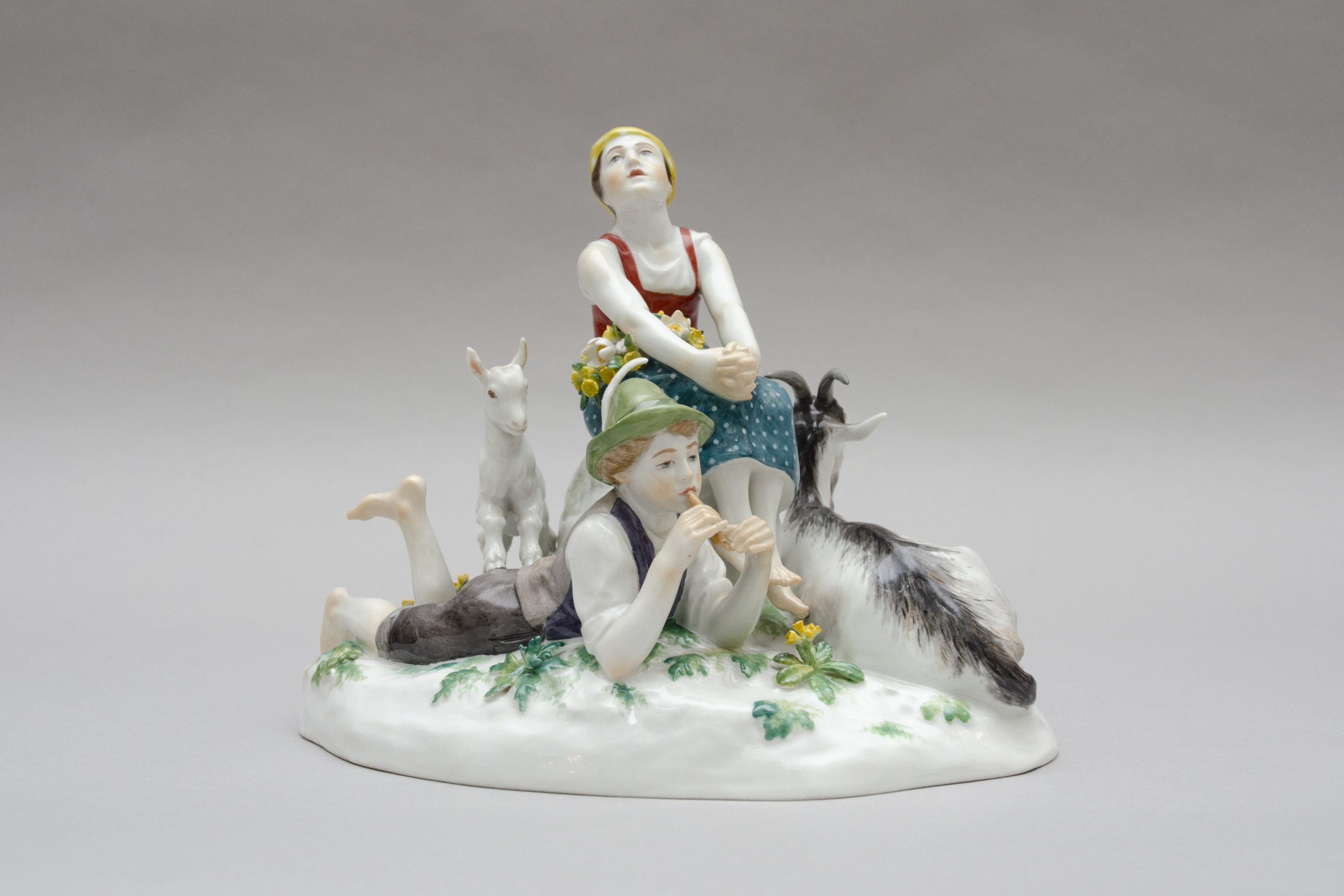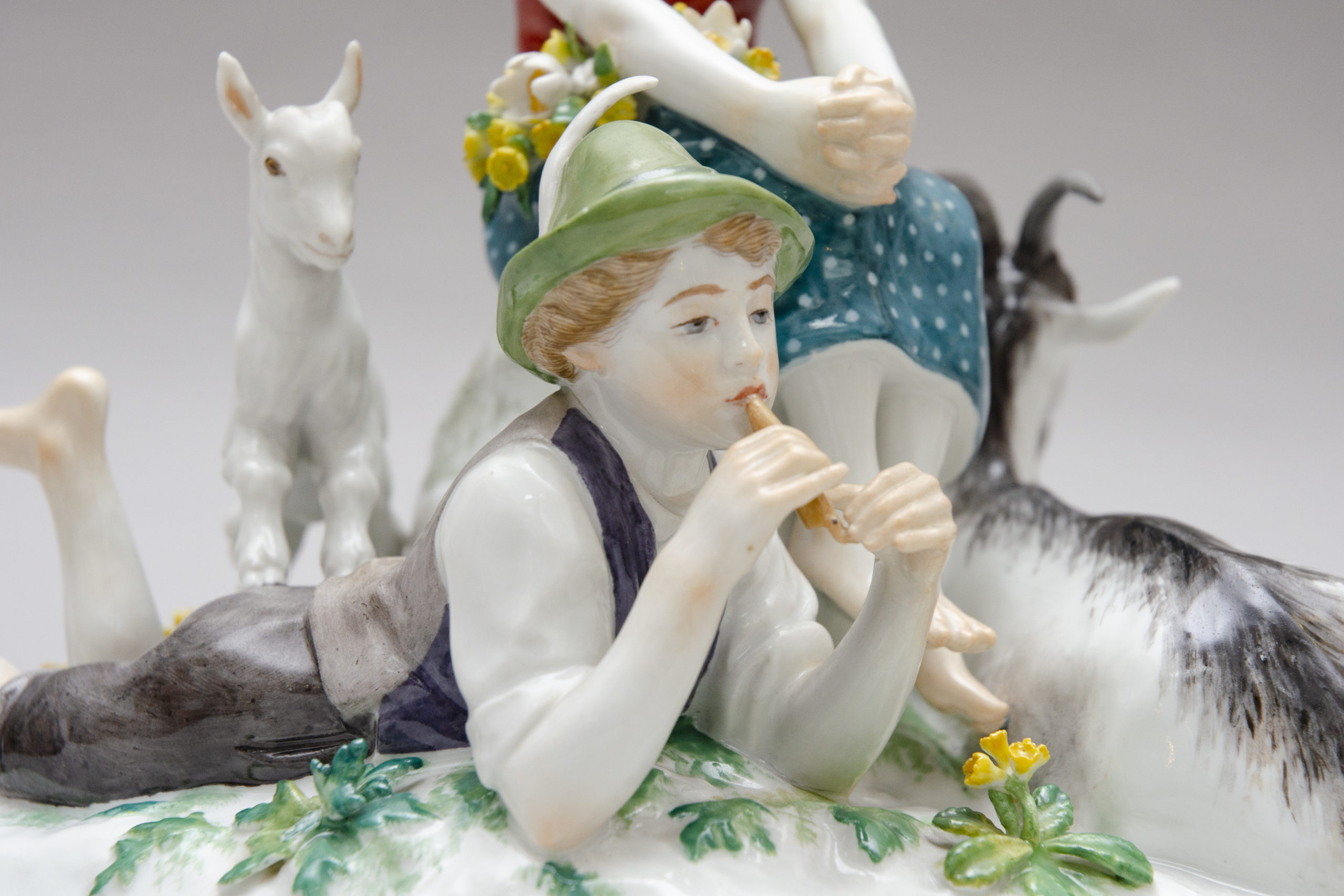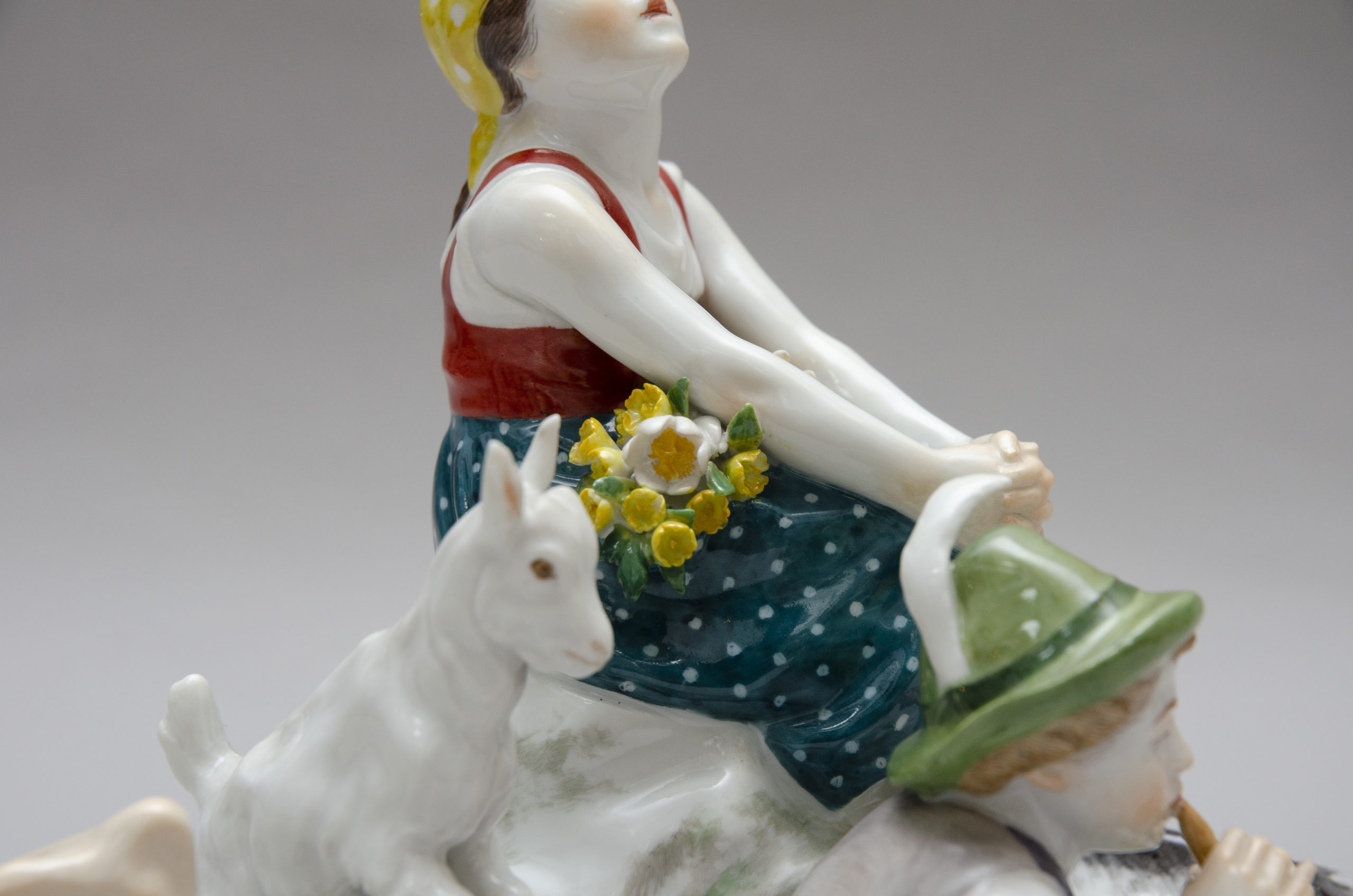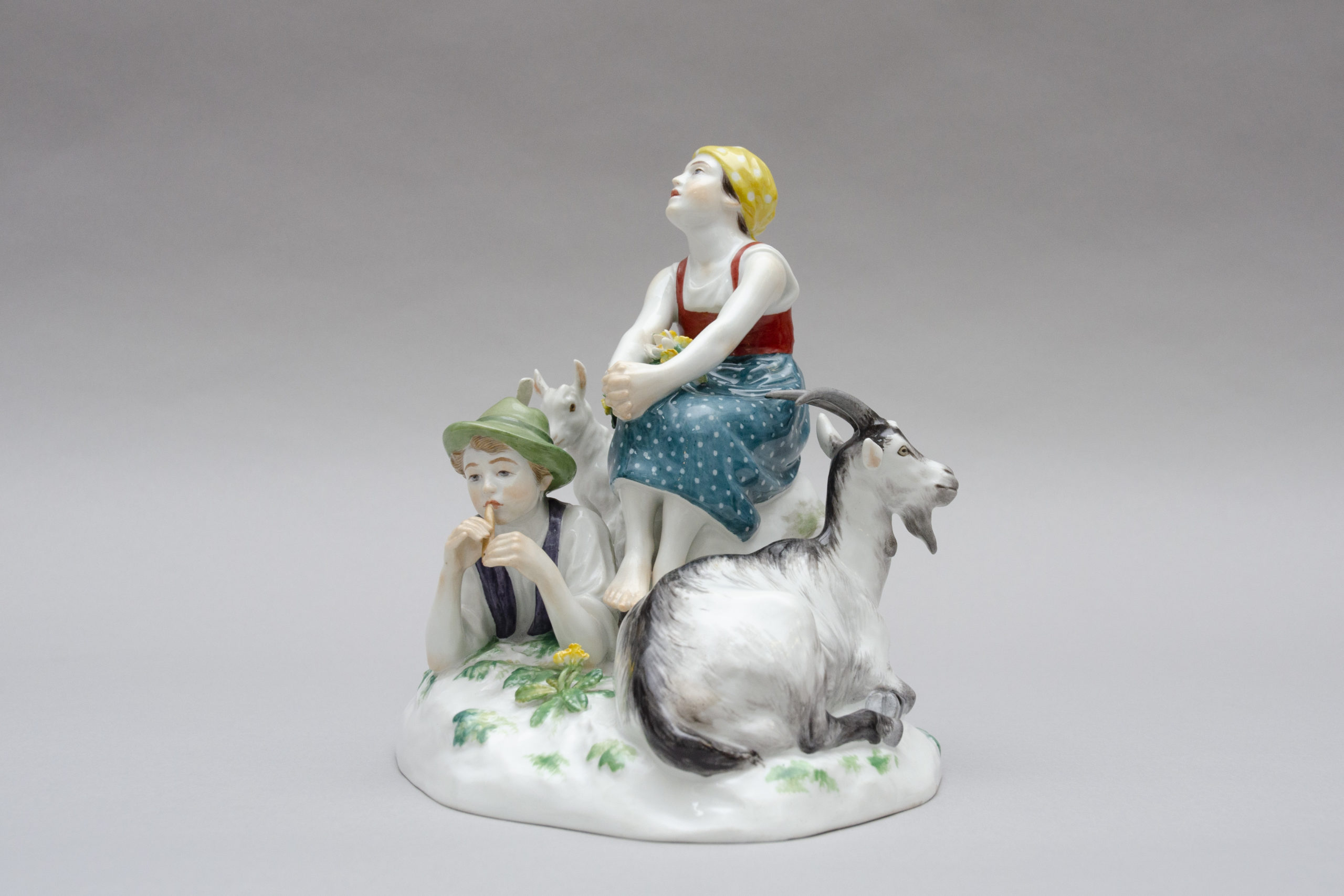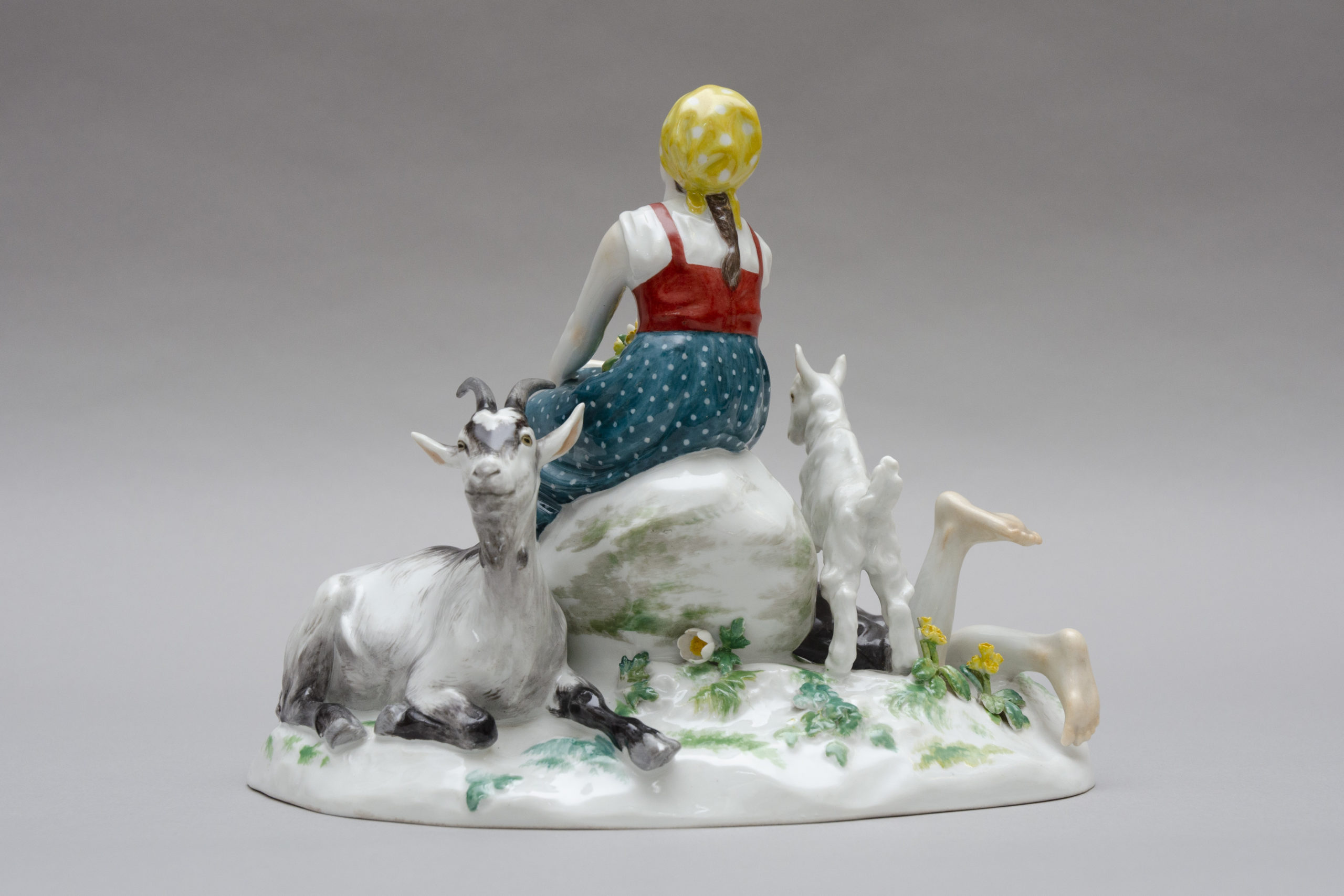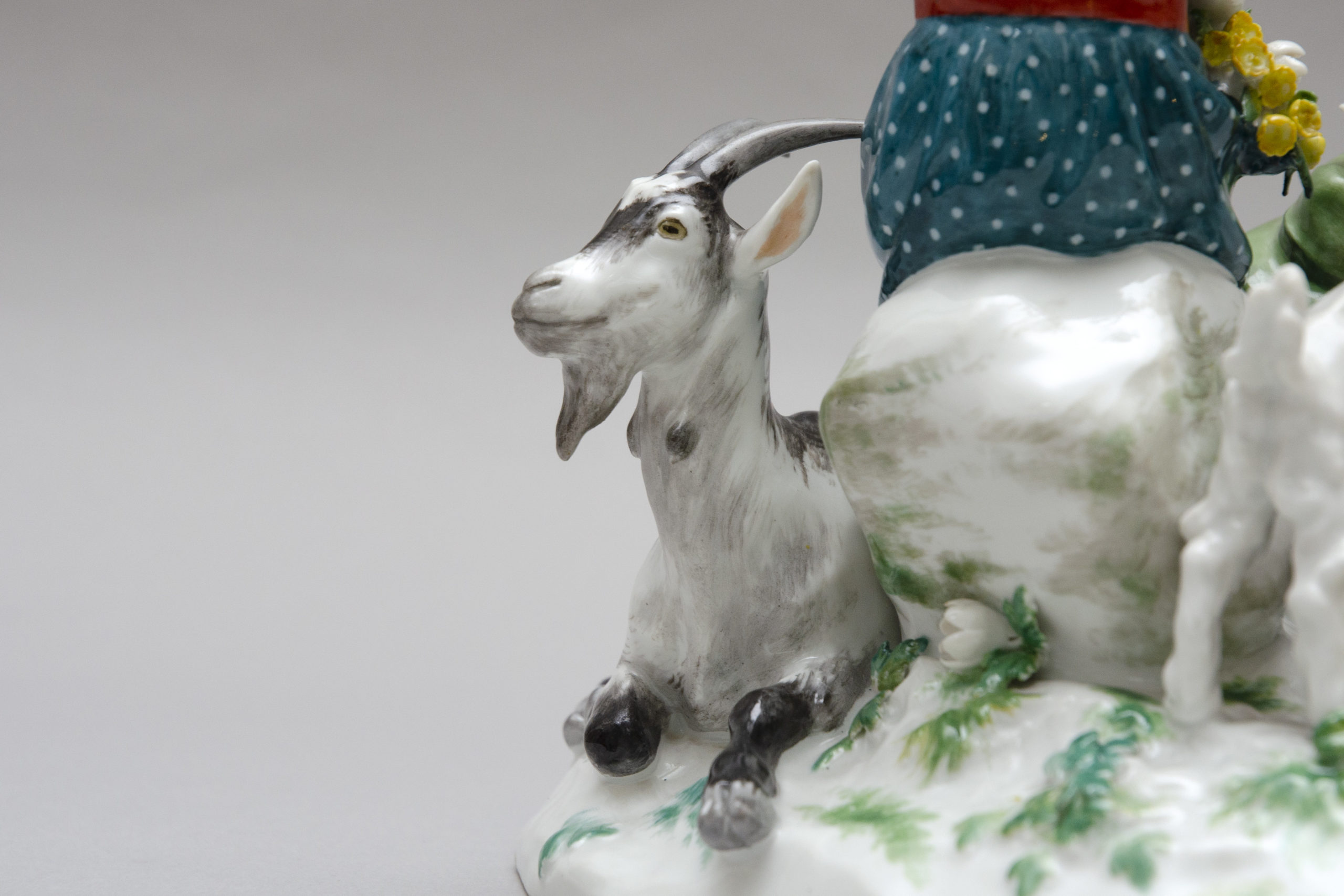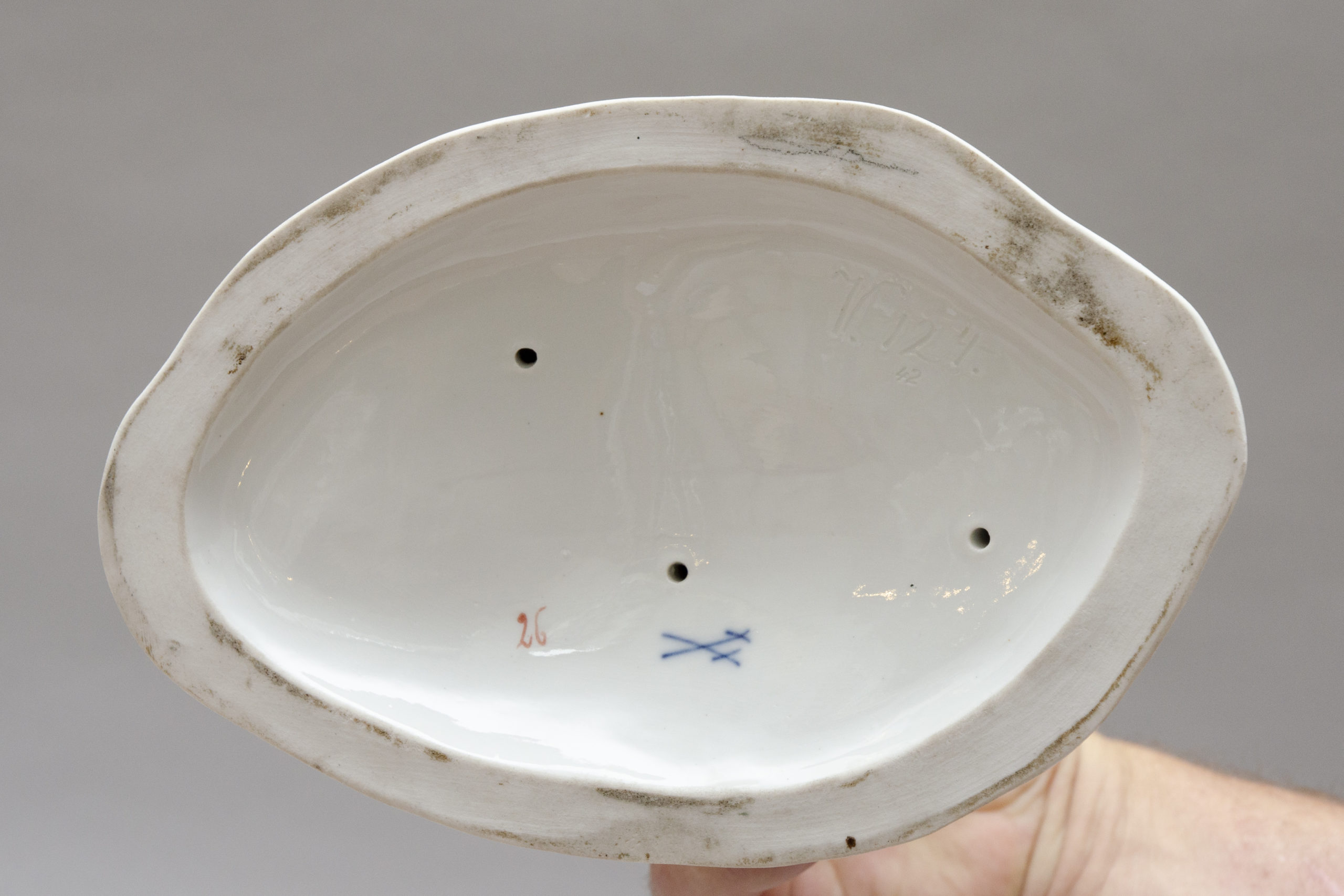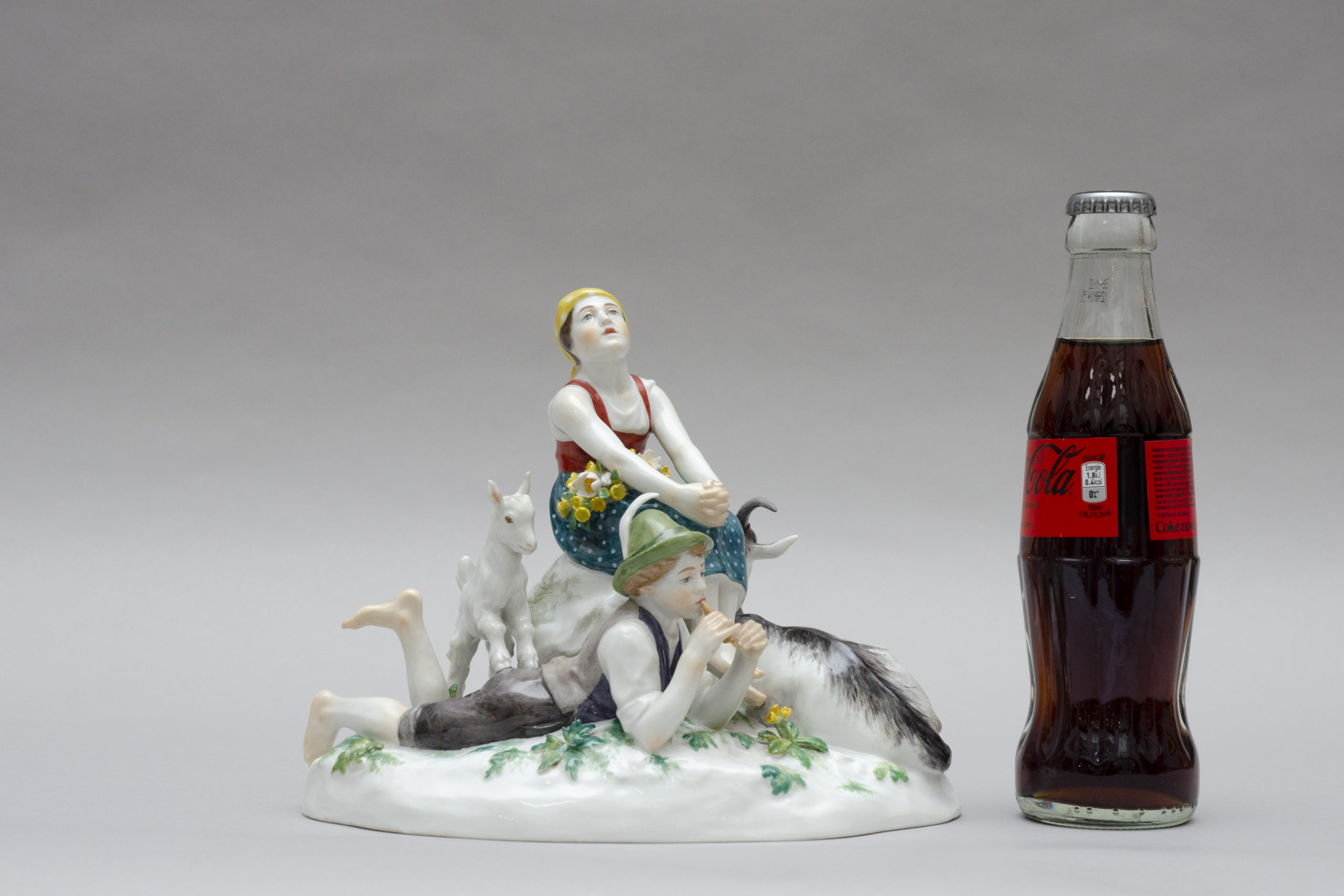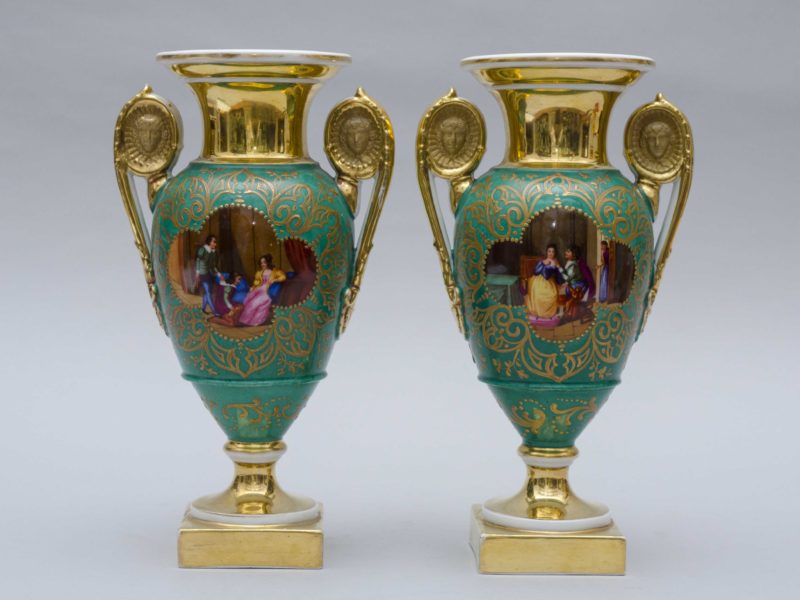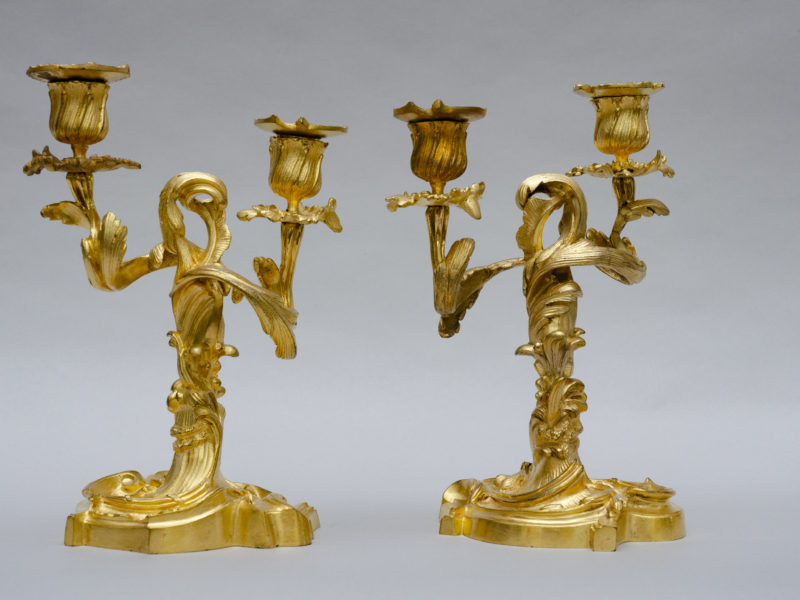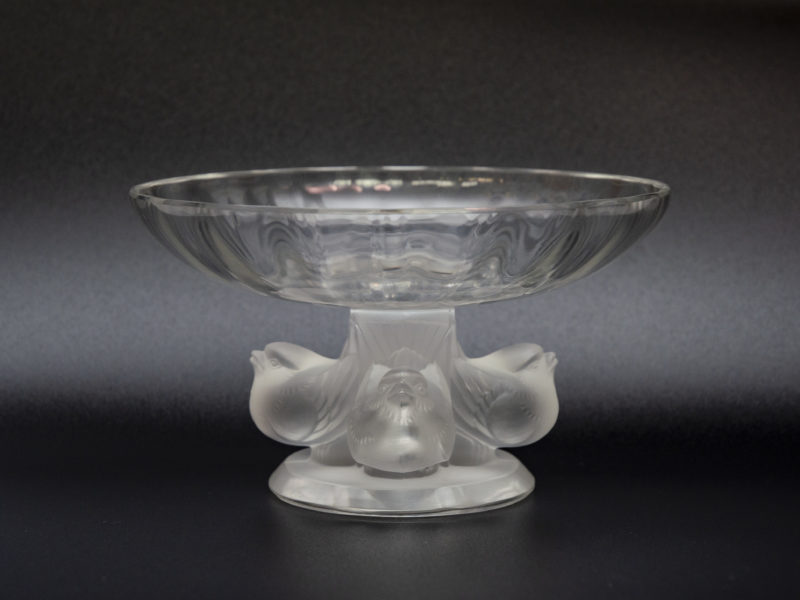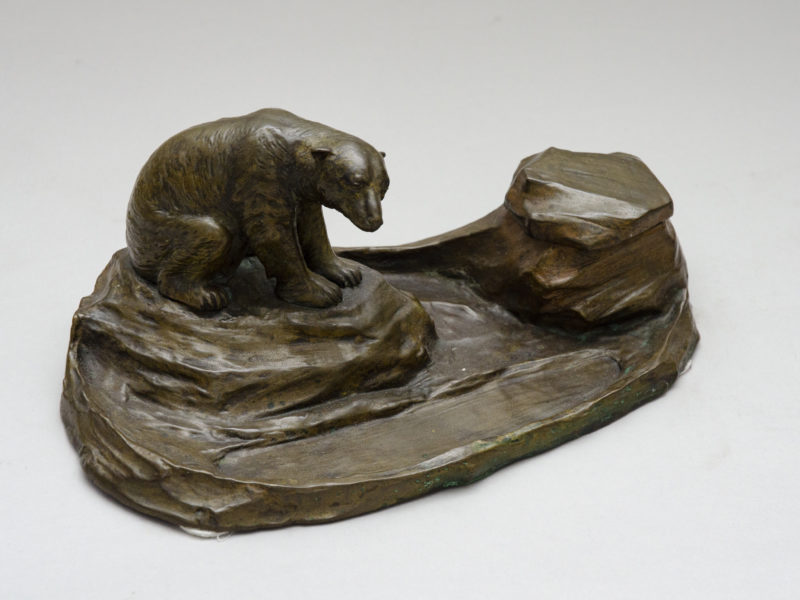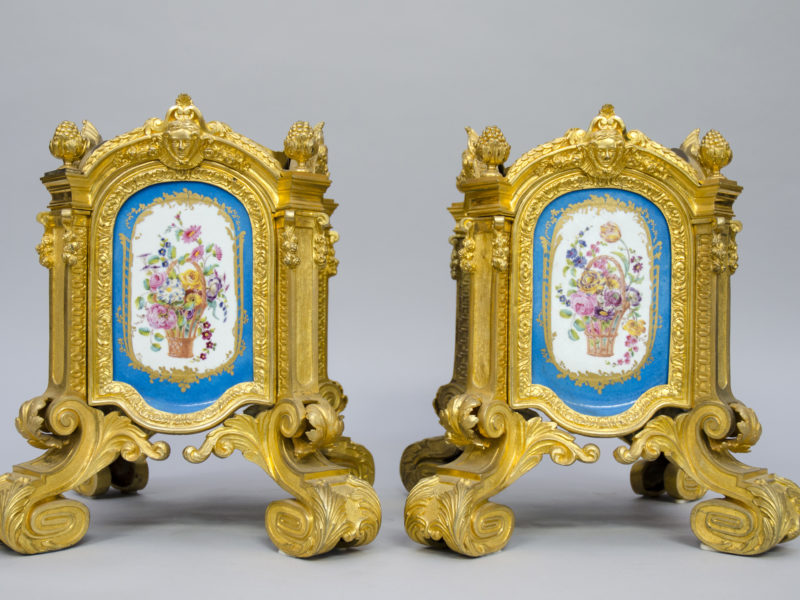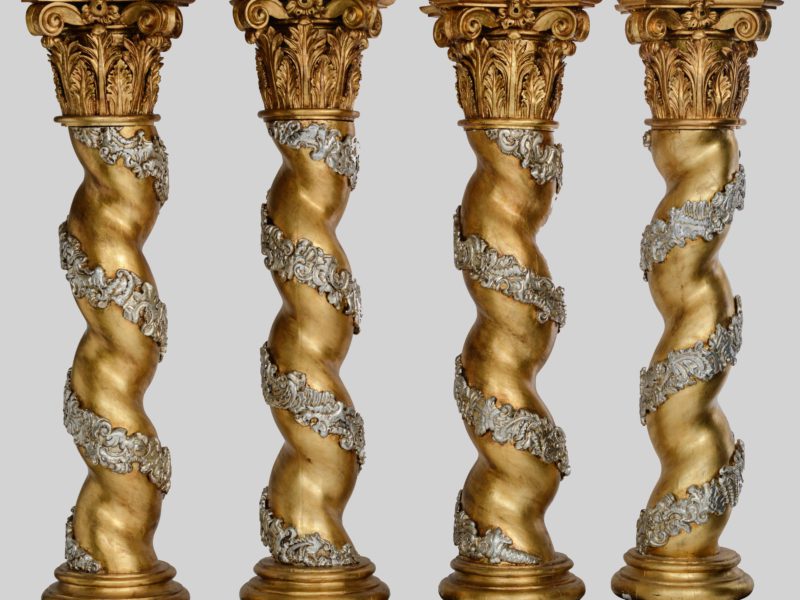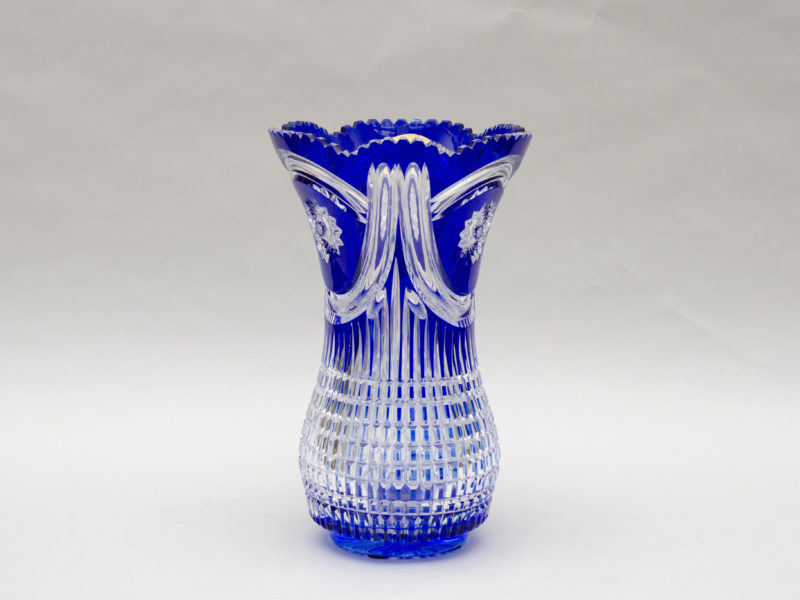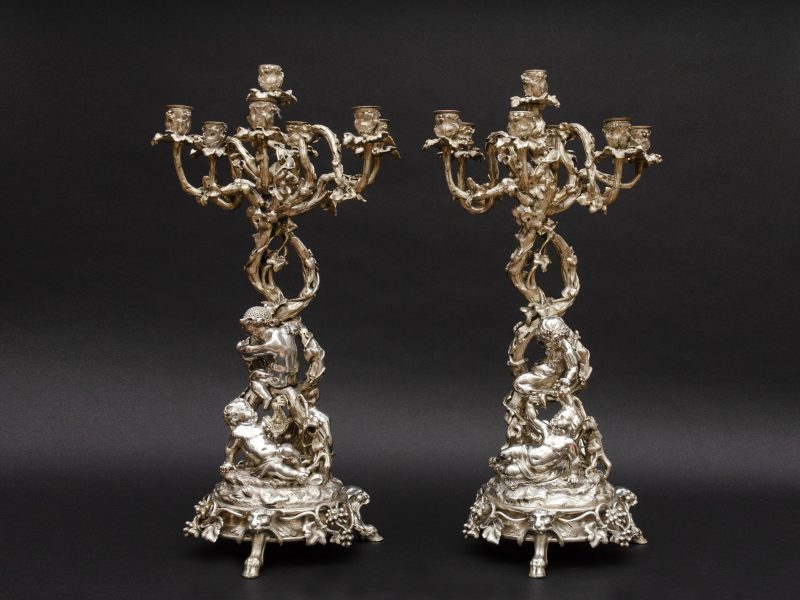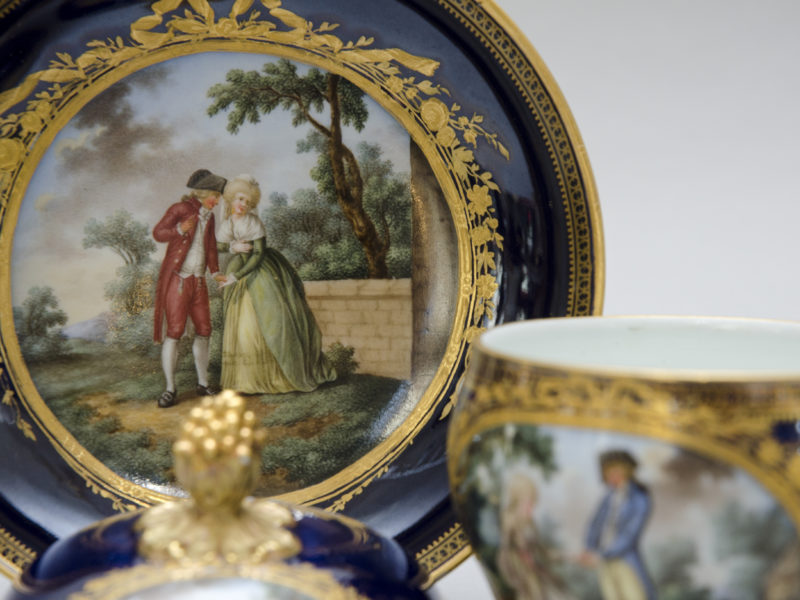
“De lente”, Erich Hösel voor Meissen
Uitverkocht
Mooie groep met herderskinderen en hun geiten. De jongen ligt in het gras en speelt op zijn fluit. Het meisje is aan het dagdromen. Omringd door hun dieren. Gemodelleerd door Erich Hösel tijdens de Jugenstil periode.
Afmetingen: H 18 cm x B 20 cm x P 13 cm
Manufactuur van Meissen, circa 1905-1910.
Literatuur: Erich Hösel (Annaberg 1869- Meissen 1953) was een beeldhouwer die studeerde aan de Academie van Dresden. Hij werd leraar en professor van 1899 tot 1904 en werkte van 1903 tot 1929 voor Meissen. In 1912 wordt hij directeur van Design en reist door Azië, Europa en Noord-Amerika. Hij creëerde alleen al tussen 1904 en 1918, 100 modellen, figuren en dieren, kinderen en Amerikaanse Indianen, portretten en genre figuren, hij gaf zijn kindergroepen graag een anekdotisch karakter.
Lit: Meissen werd in 1710 in het gotische kasteel Albrechtburg gesticht. Het was de eerste porseleinfabrikant in Europa. Het voorgaande jaar, in het Duitse Dresden, had de alchemist Johann Friedrich Böttger, ‘goudmaker’ en gevangene van Augustus de Sterke (keurvorst van Saksen en koning van Polen) de ontdekking gedaan. Aanvankelijk maakte de fabriek fijn rood Böttger-aardewerk, met reliëf en gegraveerde ontwerpen. Het eerste echte porselein, op de markt gebracht in 1713, was vergelijkbaar in stijl, in de vorm van theepotten, beeldjes en figuren in Chinese stijl. Vanaf 1720 werd het porselein briljant wit, de emailkleuren werden verbeterd, de ontwerpen waren fantastische “chinoiserieën”; het was het tijdperk van de schilder-decorateurs met J. G. Höroldt als leider. In de jaren 1730 onder het directie van graaf Brühl (tot 1752) werden de beeldhouwers, met J.J. Käendler aan het hoofd, dominant en produceerde reeksen personages, dieren en vogels, serviezen rijkelijk versierd in reliëf, en sculpturale vazen en tafelgerei. Van 1756-1773 werd porselein van meissen gemarkeerd met de gekruiste zwaarden met een punt tussen de handgrepen, bekend als de “puntperiode”. Deze periode markeerde de overgang naar de neoklassieke stijl. In 1774 werd graaf Camillo Marcolini directeur, hij bekleedde deze positie tot 1814. De meer ingetogen neoklassieke stijl domineerde, maar de fabriek daalde als gevolg van economische druk en de internationale concurrentie van de Franse fabriek Sèvres. In het begin van de 19e eeuw werden technische innovaties geïntroduceerd en de waren werden gemaakt in de populaire smaak die de situatie opnieuw verbeterde. In 1830 veranderde de naam van de fabriek van Königliche Manufaktur in Staatliche Porzellan Manufaktur. Schitterende modellering en schilderkunst waren kenmerkend voor Meissen-porselein en de daaropvolgende 50 jaar waren haar producten onovertroffen, uitgebreid geëxporteerd en veel geïmiteerd. Gedurende de 19e eeuw bleef de kwaliteit van Meissen ongewijzigd en waren er weinig innovaties, hoewel de late jaren 1890 en vroege jaren 1900 de start waren van een meer inventieve periode van de Art Nouveau. De Meissen-fabriek is nog steeds operationeel.
Uitverkocht
Contacteer ons